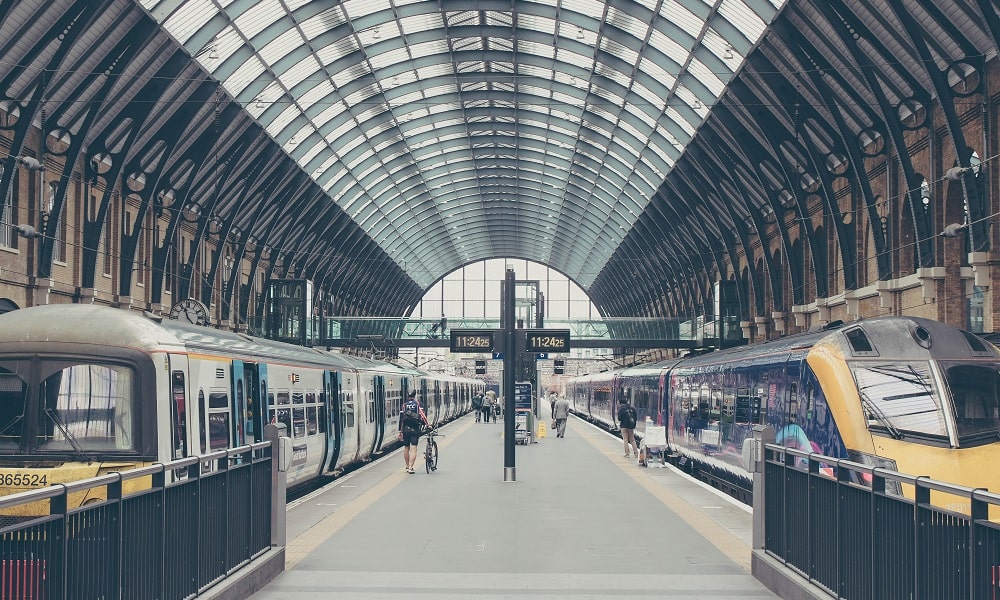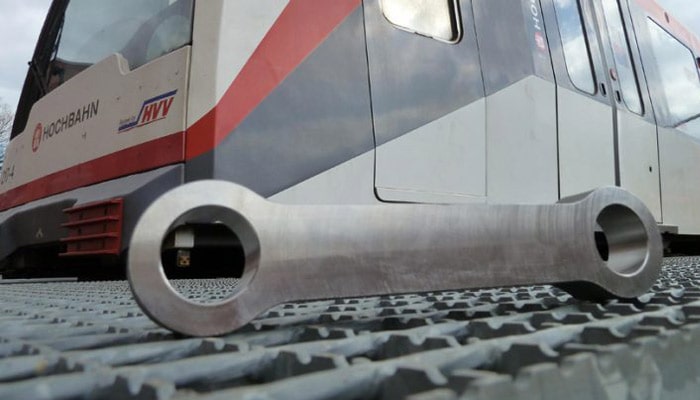The railway sector starts to make the most of 3D printing!
Posted By Lucie Gaget on Jan 8, 2020 | 0 comments
We saw in the past few years that additive manufacturing had been adopted by many different industries, from the automotive sector to the aeronautic industry. Urban transportation can really benefit from all the great advantages of 3D printing. That is why, today, we are going to focus on the railway sector.
Some 3D printing projects caught our attention and we would like to share them with you! What are the advantages of this technology for the railway sector? Will 3D printing be part of your next train journey?
How can 3D printing help the railway sector?
The rail sector obviously needs high-quality parts. Additive manufacturing can be a great help to create technical parts for the railway sector. Indeed, this technology is already used in aeronautics to create aircraft parts such as turbines.
With the constant development of XL printers and advanced metal 3D printing technologies, it becomes interesting for these industries to manufacture their parts. 3D printing is becoming a real alternative to traditional manufacturing techniques as it is now allowing these companies to work efficiently thanks to new materials and efficient technologies.
Prototype and production can both be improved by 3D printing in this sector. Indeed, additive manufacturing is the opportunity to submit new ideas, new vehicles, to completely rethink their strengths and their production process. It is also a viable and time-saving technique to create spare parts for all businesses!
For example, Bombardier the world’s leading manufacturer for both planes and trains use Sculpteo’s 3D printing service to manufacture their parts. The 3D printed parts built for Bombardier are complex and have to act as a mount for different instrumentations of fatigue tests, such as comparators, pulleys, and targets.
Stéphane Veste, Testing Engineer in the Product Integrity Test Pole of Bombardier Transport France: “We are regularly left to manufacture in 3D printing, parts that are essential in our measuring process. We rely on rules that compel us to a certain rigor regarding, amongst others, the positioning of the sensors, a phase where we use the 3D printed parts (acoustical racquet, microphone mount, positioning tools in relation to the path median, etc.). The quality of these tools contributed to the obtainment of the RFU-022 standard”.
What are the most promising projects in the railway sector?
3D printed spare parts
In Germany, German Mobility Goes Additive (MGA) is willing to explore all the opportunities linked to additive manufacturing for mobility. The network just approved the first 3D printed safety part for the metro of the German company Hamburger Hochbahn AG. This sector is now able to 3D print operational and safety-relevant components.
A metal brake suspension link has been installed on the metro. The MGA worked with different partners in order to get this part done: Siemens Mobility, heading the Approval Group, Deutsche Bahn AG and the Fraunhofer Institute.
Credits: Mobility goes Additive e.V., 2019
More generally, the German Mobility Goes Additive network thinks that 3D printing is a solution to manufacture spare parts.
Stefanie Brickwede, head of additive manufacturing at Deutsche Bahn and managing director of Mobility goes Additive explains: “When we buy trains we get the service level agreement for delivery of spare parts for around 15 years, after that time, we look for the parts on the world market and we cannot get them.”
3D printed train
Run2Rail is a new 3D printing project with one great goal: creating railway vehicles using additive manufacturing. Additive manufacturing can help to rethink and improve products, and railway vehicles could totally benefit from these amazing advantages. 3D technology can help create lighter vehicles that need less energy to function.
The aspect of the noise is also taken into account in this project, as they want to create silent trains!
3D printing spare parts is an opportunity to rethink your storage and supply chain and can be implemented in any business. Contact our sales department to get more information about how additive manufacturing can help you go through new challenges. Sculpteo is here to help you manufacture all of your projects, and now obtained the ISO 9001-2015, proving the quality of our process and service for our customers!
You already have a 3D model to print? Upload your 3D file on our online 3D printing service, you will generate an instant quote and receive your part 3D printed in just a few days.


 Connect with Google
Connect with Google Connect with Facebook
Connect with Facebook
